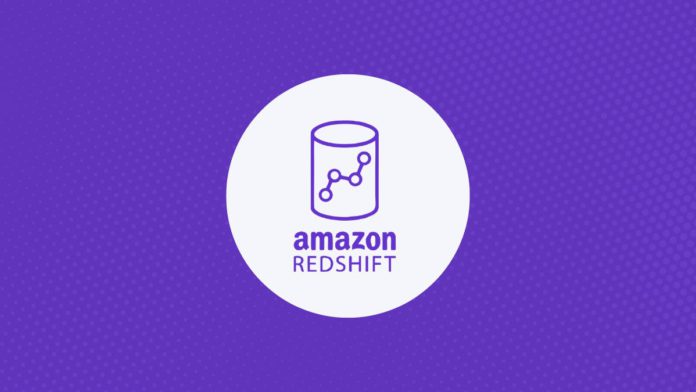Modern data infrastructures encompass tools like data warehouses to handle the analytical processing workloads. By migrating data from dispersed sources to a data warehouse, you can facilitate the generation of actionable insights that can improve operational efficiency. Among the various data warehousing solutions available in the market, Amazon Redshift is a prominent choice for data professionals.
This guide provides you with a comprehensive overview of Amazon Redshift, including its key features, architecture, pricing, use cases, and limitations.
Amazon Redshift: An Overview
Amazon Redshift is a fully managed cloud data warehouse hosted on the Amazon Web Services (AWS) platform. It allows you to store large volumes of data from numerous sources in different formats. To query this data, you can use Structured Query Language (SQL).
With the increase in data, Redshift provides a scalable solution to process information and generate insights. By analyzing your organizational data, you can create effective business strategies to drive information-based decision-making.
Amazon Redshift: Key Features
- Massively Parallel Processing (MPP): Amazon Redshift’s MPP architecture facilitates dividing complex tasks into smaller, manageable jobs to handle large-scale workloads. These tasks are distributed among clusters of processors, which work simultaneously instead of sequentially, reducing processing time and improving efficiency.
- Columnar Storage: In Amazon Redshift, data is stored in a columnar format, which optimizes analytical query performance. This feature drastically reduces the disk I/O requirements and is beneficial for online analytical processing (OLAP) environments.
- Network Isolation: Amazon’s Virtual Private Cloud (VPC) provides you additional security with a logically isolated network. By enabling the Amazon VPC, you can restrict access to your organization’s Redshift cluster.
- Data Encryption: Employing data encryption in Amazon Redshift allows you to protect data at rest. You can enable encryption for your Redshift clusters to safeguard data blocks and system metadata from unauthorized access.
- Support for Various Data Types: Amazon Redshift supports diverse data types, including Multibyte Characters, Numeric, Character, Datetime, Boolean, HLLSKETCH, SUPER, and VARBYTE formats. This flexibility allows you to store and manage data in different forms.
Amazon Redshift Architecture
Here’s a detailed description of Amazon Redshift architecture with its different components:
The AWS Redshift architecture specifically consists of various elements that work together to make this platform operational. The essential components include:
Clusters: A core infrastructure component of Amazon Redshift, a cluster contains one or more nodes to store and process information. For clusters containing more than one compute node, the cluster is provisioned such that a leader node coordinates compute nodes and handles external communication. When using Amazon Redshift, the client applications interact directly only with the leader node, not the compute nodes.
Leader Node: The leader node mediates between the client applications and the compute nodes. It is involved in parsing SQL queries and developing execution plans. Depending on the execution plan, the leader node compiles code. It then distributes the compiled code to computing nodes and assigns subsets of data to each compute node.
The leader node distributes SQL statements to the compute nodes only for the query reference tables stored in the compute node. Other than these queries, all statements are executed on the leader node.
Compute Nodes: The compute node executes the compiled code received from the leader node and then sends back the immediate results for final aggregation. In Amazon Redshift AWS, each compute node has a specific type and contains a dedicated CPU and memory to accommodate different workloads. Commonly used node types include RA3 and DC2. Increasing the number of compute nodes or upgrading its type enhances the computational capabilities of the cluster to handle complex workloads.
Redshift Managed Storage: The data in Amazon Redshift is stored in a separate location known as Redshift Managed Storage (RMS). RMS encourages you to use Amazon S3 to expand the storage capacity to the scale of petabytes. The total cost of using Redshift depends on the computing and storage requirements. You can resize clusters based on your needs to save additional charges.
Node Slices: The compute node is divided into slices. Each slice has a unique location assigned to it in the node’s memory and disk space. The node slices process the tasks assigned to the node. The leader node is responsible for assigning each slice section of the workload for effective database management.
After the tasks are assigned, slices work in parallel to complete the operation. The number of slices per node depends on the node size in a cluster. In AWS Redshift, you can specify a data column as a distribution key to allocate rows to the node slices. Defining a good distribution key powers parallel processing for efficiently running queries.
Internal Network: To facilitate high-speed communication between the leader and compute nodes, Redshift has high-bandwidth connections, close proximity, and custom connection protocols. The compute nodes operate on an isolated network that client applications cannot directly access.
Databases: A Redshift cluster can contain one or more databases. The data is usually stored in compute nodes. Your SQL client communicates with the leader node, which in turn coordinates query execution with the compute nodes.
The benefit of using Redshift is that it provides the functionality of a relational database management system (RDBMS) as well as a data warehouse. It supports online transaction processing (OLTP) operations, but it is more inclined towards online analytical processing (OLAP).
Amazon Redshift Pricing Model
Amazon Redshift offers flexible pricing options based on the node type and scalability requirements. It supports three types of nodes, including RA3 with managed storage, Dense Compute (DC2), and Dense Storage (DS2).
- The RA3 nodes with managed storage have a pay-as-you-go option, where you must pick the level of performance you wish to achieve. Depending on your data processing needs, you can outline the number of RA3 clusters.
- The DC2 nodes are beneficial for small to medium-sized datasets. To achieve high performance, these nodes can leverage local SSD—Solid State Drive. With the increase in data volume, you might need to add more nodes to the cluster.
- Contrary to other node options, DS2 nodes are crucial for large-scale data operations. Providing additional HDD—Hard Disk Drives—these nodes are slower than other options. However, DS2 nodes are cost-effective.
Based on the node type you choose, per-hour pricing options are available. Redshift also has pricing options that are according to the feature requirements. You can select plans from AWS Redshift for spectrum, concurrency scaling, managed storage, and ML functionality. To learn more, refer to the official Amazon Redshift pricing page.
Use Cases of AWS Amazon Redshift
- Data Warehousing: You can migrate data from legacy systems into a data warehouse like Amazon Redshift. Unifying data from diverse sources into a single centralized database enables the generation of actionable insights that can empower the building of robust applications.
- Log Analysis: With log analysis, you can monitor user behavior, including how they use the application, time spent on the application, and specific sensor data. Collecting this data from multiple devices, such as mobiles, tablets, and desktop computers in Redshift, helps generate user-centric marketing strategies.
- Business Intelligence: Amazon Redshift seamlessly integrates with BI tools like Amazon Quicksight, allowing you to generate reports and dashboards from complex datasets. By creating interactive visuals highlighting insights from data, you can engage various teams in your organization with different levels of technical understanding.
- Real-Time Analytics: Utilizing the current and historical data stored in a Redshift cluster, you can perform analytical processes that lead to effective decision-making. This empowers you to streamline business operations, automate tasks, and save time.
Amazon Redshift AWS Limitations
- Lack of Multi-Cloud Support: Unlike solutions such as Snowflake, Amazon Redshift lacks extensive support for other cloud vendors, like Azure and GCP. It is suitable if your existing data architecture is based on Amazon Web Services. If your data and applications rely on another cloud vendor, you might first have to migrate data to an AWS solution.
- OLTP Limitations: As an OLAP database, Amazon Redshift is optimized for reading large volumes of data and performing analytical queries. However, its architecture makes it less efficient for single-row operations and high-frequency transactions. Due to this, organizations often prefer using an OLTP database like PostgreSQL with Redshift.
- Parallel Uploads: Redshift only supports a limited number of databases for parallel upload operations with MPP. This restricts quick data transfer between platforms, often requiring custom scripts to perform uploads to other tools.
- Migration Cost: Operating Amazon Redshift for larger amounts of data, especially at the petabyte scale, can be challenging. Integrating this data into Redshift can be time-consuming and expensive due to bandwidth constraints and data migration costs.
Conclusion
Incorporating an OLAP platform like Amazon Redshift into your data workflow is often considered beneficial. It empowers you to work with and analyze data from various sources. By leveraging this data, you can strategize your business decision-making process.
Another advantage of using Amazon Redshift is its robust integration capabilities, allowing connections with numerous BI tools and databases in the AWS ecosystem. This feature is advantageous if your organization already relies on Amazon cloud services, as it offers seamless data movement functionality.
FAQs
Is Amazon Redshift a database or a data warehouse?
Amazon Redshift serves as both a data warehouse and a relational database management system (RDBMS). Its combination of database and OLAP functionality facilitates data warehousing capabilities.
What is Amazon Redshift Used for?
Amazon Redshift is commonly used for reporting, data warehousing, business intelligence, and log analysis.
Is Amazon Redshift SQL or NoSQL?
Amazon Redshift is an SQL-based data store built on PostgreSQL.
What is the difference between AWS S3 and Amazon Redshift?
Although there are multiple differences between AWS S3 and Amazon Redshift, the key difference could be attributed to their primary function. Amazon S3 is a storage solution for structured, semi-structured, and unstructured data. On the other hand, Redshift offers warehousing capabilities and is used to store structured data.
Is Amazon Redshift an ETL tool?
No, Amazon Redshift is not an ETL tool. However, it provides built-in ETL capabilities, which you can use to extract, transform, and load data to supported platforms.
Is Amazon Redshift OLAP or OLTP?
Explicitly designed for OLAP, Redshift is suitable for analytical workloads. Although it can handle OLTP tasks, using a different solution to handle transactional operations is often preferred.


